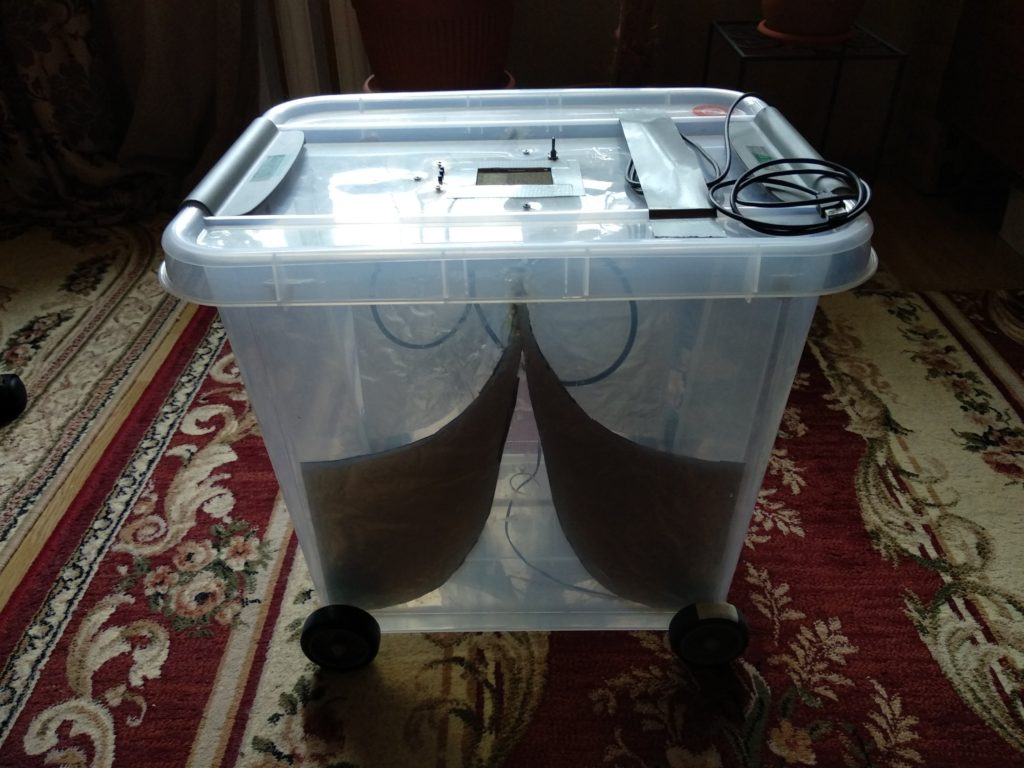Stacking prints in Cura is easy, and I take you through the simple steps to make it happen. This is part of a series, start here: https://youtu.be/UeKfZ5r9s9s
DOOM on the Nintendo Game and Watch
A lot of people asked for it – and so here it is: DOOM running on the Nintendo Game and Watch. This took far more effort than I expected, but I hope you enjoy it.
Plex – HDR to SDR Tone Mapping
This feature allows Plex Media Server to maintain high visual fidelity of content, by applying tone mapping to convert it to SDR when transcoding HDR content.

The GPRino is a $300 ground penetrating radar
Ground penetrating radar systems, which can be used to sense the density of objects under the Earth, are normally seen as a fairly exotic piece of equipment. Naturally, such devices cost thousands of dollars. Mirel Paun’s “GPRino” prototype, though, aims to accomplish this viewing task for the comparatively paltry sum of $300.
The GPRino uses antipodal Vivaldi antennas to see into the ground, under control of an Arduino Mega. Onboard visualization is handled by an LCD shield, and collected data can also be transmitted to a PC for further analysis.

This Oscilloscope Tester Keyring Puts ‘Scope Troubleshooting Powers in Your Pocket
The Engineering Octopus has launched a keyring with a difference: As well as helping you keep track of your keys, it doubles as a means to quickly test an oscilloscope — hence its name, the Oscilloscope Tester Keyring (OTK).
“All electronic engineers love to show off the fact that they are electronic engineers, and what better way to do that than with a keyring! Not only will the bare electronics be noticed by many, it’s also a fully functional oscilloscope tester,” The Engineering Octopus founder Max writes. “The OTK generates a pure, analog, sine wave (via a Colpitts oscillator) at approximately 10MHz (+/-2MHz). It has a DC offset, which allows you to test almost all functions of a oscilloscope, and carry it with you everywhere you go!”
α-WaLTR Turns It Wheels Into Triple-Bladed “Legs” to Navigate Uneven Terrain — and Even Stairs
Built as part of a military program but with wide-ranging use-cases, α-WaLTR goes where other wheeled robots fear to roll.
Researchers at Texas A&M have designed a compact four-wheeled robot for whom stairs and other uneven terrain pose no problems — thanks to wheels which can transform themselves into “legs” on demand.
Dubbed α-WaLTR, for the Adaptable Wheel-and-Leg Transformable Robot, the robot has been built as part of DARPA’s Offensive Swarm-Enabled Tactics (OFFSET) programme under the leadership of grant awardee Associate Professor Kiju Lee. “Through this new project,” Lee explains, “I will develop unmanned ground vehicles with agile and versatile locomotive capabilities for urban military operations.
This PS1 Secret Feature remained hidden for 26 years… Until now
The original Playstation 1 had a secret feature that not many people knew about, until now. You probably played PS1 way back in the day & wish you found out about this.. It’s absolutely top secret.
Using ESP8266 WiFi Module with Arduino Micro
Although the ESP8266 01 WiFi Module has a wide support and a good community crowd, the Arduino Uno board takes advantage of it’s ease of use and beginner-friendly layout over Arduino Micro for being one of the most used boards for cheap IoT solutions. As a result, there aren’t many tutorials documenting how to use the module with this board. So here’s a short & simple tutorial for people getting started with IoT and want to use the Micro+ESP01 combination.
Digital LED Staircase lightening in motion using Arduino and Ultrasonic Sensor
Automated lightening of staircase not only helps to save electricity but also takes us to advancement in quality living of life. We generally uses normal circuit to turn on and off the light in stairs, but there is loss in electricity since we turn it off only at once during sleep. So, in this tutorial we are going to make the automated staircase that will light up only when it senses motion of people passing through stair.
Geekworm’s Voice HAT Gives a RaspberryPi Stereo Microphones, a Built-In Speaker, and RGB LEDs
Geekworm has released a new add-on for the Raspberry Pi and compatible single-board computers, designed to make development of voice-activated systems as simple as possible: the dual-microphone Voice HAT.
“Raspberry Pi Voice HAT is a Raspberry Pi dual-microphone expansion board specially designed for AI and voice applications,” the company writes of its most recent release. “It supports Raspberry Pi 4 Model B/3B+/3B/2B. Now you can build a more powerful and flexible voice product that integrates Amazon Alexa voice service, Google Assistant, Baidu AI, etc.”
